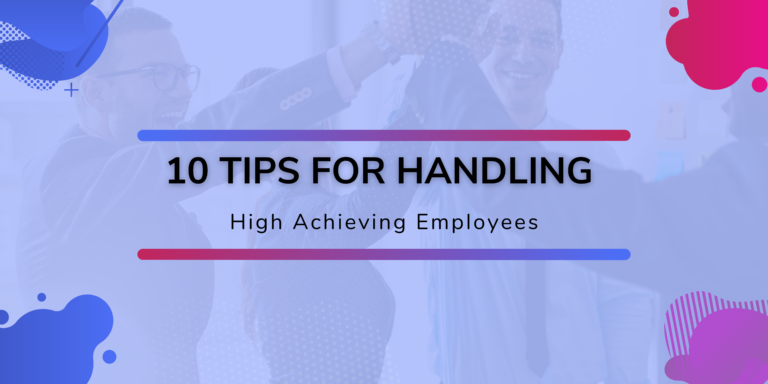What is PeopleOps – And What Does it Mean For The Future of HR?
Posted by Trakstar • April 29, 2022 • 6 min read
People operations, also known as PeopleOps, is a popular phrase or idea in human resources, talent development, and people management. PeopleOps puts people before operations-quite literally. The goal is to create a happier, healthier workforce that is still productive and effective. It’s all about finding the balance between hard workers and the right people.
PeopleOps often starts within human resources, but it is slightly different from it. However, they have to work hand-in-hand to be effective. Trakstar’s platform can help bridge the gap between PeopleOps and HR by connecting those pivotal employee moments that foster change within an organization, drive employee engagement, and develop your best talent.
People Operations Defined: What is PeopleOps?
PeopleOps is the business function that creates feelings of engagement, productivity, and inclusiveness in your employees. PeopleOps humanizes the workforce and encourages everyone to see the humanity in each other, helping to create a more positive work environment.
Laszlo Bock coined the term in his book Work Rules, claiming that having a specific team of people being the scenes to help fill jobs, create learning opportunities, and more helps your employees to “be more productive, healthier, and happier.”
Too often, people think that PeopleOps is only something that larger businesses can do, but that isn’t the case. Some companies cannot have an entire PeopleOps department, but they may be able to carve out portions of their time to focus on PeopleOps. It’s a fine line to walk, but it can make the difference between an organization of chaos and churn and one that retains its best employees.
Is PeopleOps Different From Human Resources?
People Operations and HR are often combined in smaller companies, but they can be two separate entities. They should work hand-in-hand, but they have some essential differences that are important to note.
A traditional human resources department may focus on compliance and reducing liabilities or bad performance; PeopleOps concentrate on maximizing the value of the employee. They may do this by educating employees and training them, enrolling them in mentorship programs, or even helping with college courses. PeopleOps offers a more holistic view of the business and thinks people are the company’s greatest asset – and they protect them at all costs. Human resources tends to be much more middle of the road, but they don’t have to be.
In the end, PeopleOps tend to be more strategic and involved in procedures, whereas HR does much of the legwork. HR will be there to respond to problems as they arise, but PeopleOps will help to predict issues and mitigate them.
Often, HR will carry out much of what PeopleOps does until there is a PeopleOps department or position. That is when they move into this different sector.
Do You Need A PeopleOps Department?
Every company is different, and whether or not you need a PeopleOps department is highly dependent on your company, its culture, and the people you employ. However, many startup companies that grew quickly have paid the price for not managing their people effectively. Lawsuits, toxicity, and bad reputations can emerge rapidly in specific environments.
If you are starting your business, have a lot of employee churn, or you’re growing quickly, it might be something to consider. Having a least one PeopleOps person can help you manage your people and take care of new employees who are most likely to leave. There are different ratios and statistics, but most often, one PeopleOps person per 25 employees is an excellent place to start.
For companies that are already large, creating an entirely new team might be helpful. However, it’s usually a good call to bring at least a few people over from the existing HR team.
Who Makes Up A PeopleOps Department?
Every company will be different, but there are specific roles that are imperative for success. PeopleOps is an integral part of building culture within an organization and helping to define goals and reach them. There are many parts of the company that PeopleOps touches.
Whether you have a one-person PeopleOps department or multiple roles, many of their functions will be similar. As you grow, you can get more specific with what those roles do. For example:
-
- The People Operations Manager manages the overall team, similar to the work of a PM or a product manager. They oversee everything the team does, streamline operations, and communicate with other departments. If you only have a one-person department, you’ll likely start here.
- The People Operations Coordinator is responsible for some of the administrative duties of the department. They make sure the day-to-day functions of the department run smoothly.
- The Director of People Operations is a seasoned PeopleOps or HR professional. They work directly with business leaders to develop a people-first strategy and a workforce strategy. Depending on the company’s size, they also take on many managerial tasks. As companies grow, they will phase out that work.
- The People Operations Specialist helps look at the People Analytics and data associated with PeopleOps and HR. Many companies will have them assist in building learning management, onboarding programs, and recruitment initiatives.
- Finally, the People Operations Analyst looks at the data and finds flaws in what is happening with the workforce. They help to keep a company compliant and within regulations.
Of course, there are other levels and positions for the PeopleOps department, but these are the basics.
What Does PeopleOps Mean For HR?
So what does the future of PeopleOps mean for human resources? The two should work together, not against each other in any way. The overall goal is to improve employee experience, reach business goals faster, and ensure everyone is happy at work. At the start of the process, HR will work to develop a PeopleOps strategy that is aligned with your existing company. There are many facets that PeopleOps touches that HR may struggle with or not have the resources to attend to, including:
- Equity and DEI practices
- Employee Experience
- Employee Engagement
- Security
- Remote or Hybrid Experience
- Churn
- Onboarding
- Learning Opportunities
- Benefits and Perks Administration
- Employee Well-Being
- HR Metrics (like those from Trakstar Insights)
- Emotional Intelligence
This is just a sampling of what PeopleOps are responsible for handling. There are so many more things they can do.
Use The Trakstar Platform To Help Streamline HR & PeopleOps
Finding the right balance is hard, especially if you don’t have a dedicated HR department and PeopleOps department. For any organization, it can be hard to do everything to keep employees happy and remain productive. Trakstar’s platform helps streamline some of the “busy work” that HR has to free up time to focus on some of these human tasks – probably the same functions that made you want to be an HR leader.
Having a platform that naturally guides your employees through the employee lifecycle, encouraging ongoing education and training while regularly checking engagement, and setting goals can help attract, retain, and engage them gives you that opportunity.
Even better, the platform connects those pivotal moments so that you can see how they impact your workforce. It gives you the data about those moments and helps you tell the story about the work you do – and the employees you represent and fight for daily.
To learn more about the Trakstar Platform and how it can fit into your day-to-day expectation setting, schedule a demo today.
Don't Miss Out on More Great HR Articles!
Subscribe to get the latest, greatest HR and Talent Development content straight to your inbox.


